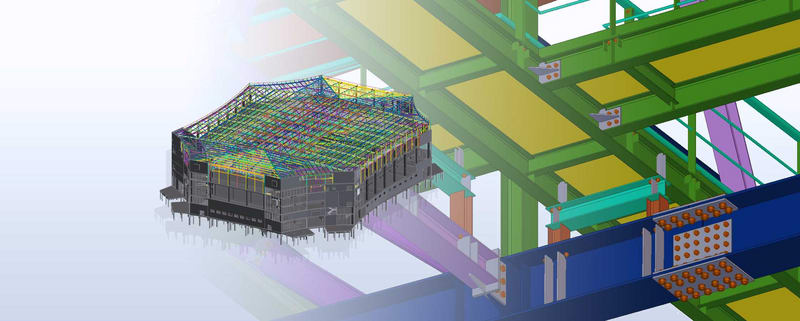The Future of BIM in the Construction Industry

|
The construction industry is on the brink of a technological revolution, with Building Information Modelling (BIM) technology at its core. BIM technology has reshaped how construction projects are planned, designed, and executed, offering unprecedented levels of efficiency, collaboration, and sustainability. As we look to the future, it's clear that BIM will continue to play a pivotal role in transforming the construction landscape, particularly in rapidly-developing regions like Southeast Asia. BIM technology is a digital representation of the physical and functional characteristics of a building. It serves as a shared knowledge resource for information about a facility, forming a reliable basis for decisions during its lifecycle. Since its inception, BIM technology has significantly enhanced the construction industry. BIM allows for precise planning and resource management, reducing waste and optimizing workflows. It fosters collaboration among all stakeholders by providing a centralized platform for sharing information in real-time. It also supports sustainable construction practices by enabling the analysis of environmental impacts during the design phase. In the following sections, we will explore the current trends in BIM technology shaping the future of construction, including integration with emerging technologies, advancements in visualization, sustainability efforts, regulatory compliance, and data-driven decision-making. Current trends in BIMIntegration with emerging technologiesThe simultaneous emergence of new BIM technology and opportunities for integrations with other tech makes it an exciting time to work on construction projects. Internet of Things (IoT) devices can be integrated into BIM to monitor building performance and maintenance needs in real-time. For example, smart sensors in a building's HVAC system can provide data on energy use, which can then be analyzed to optimize efficiency. Artificial Intelligence (AI) algorithms can process vast amounts of data generated by BIM to identify patterns and make predictive recommendations. In Southeast Asia, AI-driven BIM tools are being used to enhance safety by predicting potential hazards on construction sites. Augmented Reality (AR) and Virtual Reality (VR) technologies allow for immersive visualization of BIM models, enabling stakeholders to explore virtual construction environments before actual building begins. This is particularly useful in complex projects, such as the development of smart cities in Singapore. Using BIM in conjunction with these emerging technologies revolutionizes how we approach construction projects. Collaboration and cloud-based solutionsConstruction is a fundamentally collaborative process, and BIM allows multiple stakeholders to plan, design, construct, and maintain a structure or building within one 3D model. To further facilitate teamwork, BIM technology is increasingly leveraging cloud-based solutions to enhance this aspect. Cloud-based BIM platforms allow multiple stakeholders to work on a project in real-time, regardless of their location. These tools are especially valuable in cross-border projects, such as infrastructure developments in the ASEAN region, where seamless collaboration is essential. Advanced visualization and simulationBIM technology is also making advances in the areas of visualization and simulation, providing more comprehensive insights into construction projects. VR and AR. As mentioned, VR and AR are becoming integral to BIM, offering interactive experiences that allow teams to visualise construction details in 3D before any physical work begins. This can help prevent costly errors and rework. 4D and 5D BIM. There are also powerful extensions to traditional 3D BIM which incorporate time (4D) and cost (5D) dimensions into the models. In an increasingly demanding construction industry, 4D BIM is being used to manage complex project timelines, while 5D BIM helps control budgets by linking financial data directly to the model. Sustainability and efficiencySustainability is increasingly becoming a priority in construction, and BIM technology is at the forefront of this movement. Green building. BIM enables the simulation of energy consumption and environmental impact during the design phase, supporting the development of green buildings. In Malaysia, BIM is being used to design energy-efficient buildings that comply with the Green Building Index (GBI) standards. Lean construction. BIM supports lean construction practices by streamlining processes, reducing waste, and ensuring that resources are used efficiently. This is particularly beneficial in the context of Southeast Asia's rapid urbanization, where sustainable development is crucial. Regulatory compliance and standardsAs BIM technology becomes more prevalent, regulatory compliance and industry standards are evolving to keep pace. Increasing mandates for public projects. Governments across the SEA region are beginning to mandate the use of BIM in public infrastructure projects. For instance, Singapore has been a leader in this area, requiring BIM submissions for certain types of building projects. Global Standards (ISO 19650). The adoption of global BIM standards, such as ISO 19650, is facilitating international collaboration by ensuring consistency across projects. This is particularly important for multinational projects in Southeast Asia, where diverse teams must adhere to the same standards. Data-driven decision-makingFinally, BIM technology is enabling more informed decision-making using data and analytics. Big data and analytics. By analyzing the vast amounts of data generated by BIM models, construction teams can identify trends, optimize processes, and predict future challenges. For example, big data analytics is being used in Thailand to optimize resource allocation on large-scale infrastructure projects. Digital twins. Digital twins are virtual replicas of physical assets that can be used to monitor and manage buildings throughout their lifecycle. Digital twins are being used to manage complex infrastructure, such as transportation networks, by providing real-time data on performance and maintenance needs. BIM technology – maximizing construction potentialThe future of BIM technology in the construction industry is bright, with significant advancements in integration with emerging technologies, enhanced collaboration through cloud-based solutions, advanced visualization and simulation, sustainability efforts, regulatory compliance, and data-driven decision-making. As Southeast Asia continues to develop rapidly, the adoption and evolution of BIM technology will be crucial in ensuring that construction projects are efficient, sustainable, and successful. The continued innovation in BIM will undoubtedly shape the construction industry's future, offering new possibilities for professionals worldwide. |